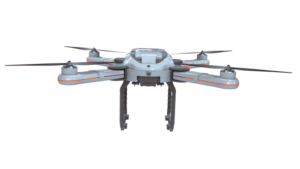How Henkel is helping to power the logistics drone revolution
Unmanned Aerial Vehicles (UAVs) already play an important role across a diverse range of commercial applications, from logistics to surveying and service monitoring. That role is set to grow as…
Unmanned Aerial Vehicles (UAVs) already play an important role across a diverse range of commercial applications, from logistics to surveying and service monitoring. That role is set to grow as UAV technology develops.
A 2021 Henkel article highlights some of ways in which the UAV market is blazing the trail for wider applications of logistics drone technology. The size of the UAV market is set to grow, with one September 2022 report forecasting market growth from USD 26.2 billion in 2022 to USD 38.3 Billion by 2027 at a CAGR of 7.9%.
Trailblazing enterprises are pushing the boundaries of UAV use in logistics, deploying drones in an ever-broader range of humanitarian, scientific and commercial applications.
This diversification creates opportunities and challenges for UAV design and production.

Flying drone above the rice or padddy field,technology agriculture concept.
Volume growth drives demand for more cost and time efficient manufacturing processes that minimise environmental impacts.
Deploying drones in increasingly challenging environments calls for innovative design, materials and manufacturing methods to deliver solutions which are resilient to factors like rain, wind and extremes of temperature, and robust enough for sustained, long-range operations (BVLOS), often in difficult terrain.
This blog explores the benefits of UAVs in humanitarian and scientific deployments and the key role Henkel has to play in the future of UAV design and production. Henkel’s market leading capabilities in materials solutions, along with its commitment to innovation, sustainability and collaboration, positions it ideally for working with drone designers and manufacturers to meet the evolving challenges and opportunities of the UAV sector.

Modern crop farming with drones spraying the plants at sunrise 3d render
How UAVs are stretching logistics boundaries
While the vision of drone delivery in urban areas has taken more time to realize than was first forecast, logistics drones have become established as a cost-effective, efficient airborne solution for less densely populated locations with poor transport infrastructure, difficult terrain and other environmental challenges.
UAVs can deliver much greater benefits to this kind of location, without the complications of flying in crowded airspace over large numbers of people and buildings. As a result, drones are starting to transform humanitarian and scientific activities around the world.
Much of the world’s population still does not have reliable, fast and easy access to pharmaceuticals, medical testing or other critical services.
Logistics drones are opening up the capability to deliver or collect drugs, samples and other medical products, on demand, safely, rapidly and economically, in locations where even the simplest medical requirement previously called for a helicopter, 4WD vehicle or a trek through inhospitable and dangerous terrain.
In the scientific arena, drones are delivering a safe and cost-effective solution to challenges such as monitoring endangered species populations as they range over a wide geographical area, tracking the progress of forest fires, or providing essential live updates on volcanic activity.
Taking UAVs further drives innovation in drone technology
These applications of logistics drone technology bring a different set of challenges to operation in urban areas. Drones have to operate safely and efficiently over long distances and beyond visual line of sight, in extremes of heat or cold, wind and rain.
In turn, these challenges are driving innovation across the value chain, from raw materials through component production, to UAV assembly and into operations and maintenance.
Continually improving the resilience, range, power, reliability, maintainability and sustainability of drones while at the same time driving down costs throughout the value chain, enables drones to push the boundaries of logistics still further.
How Henkel adds value
Henkel’s unrivalled pedigree in innovative materials solutions, particularly in the aerospace and EV sectors, make it an ideal partner in UAV design and manufacture.
Over many years, Henkel has established a strong track record and demonstrated its commitment to sustainability and building collaborative relationships throughout the value chain, and it has extensive experience in meeting the exacting demands of aerospace type certification from design onwards.
Henkel’s applied expertise in the UAV arena, covering key areas such as composite material bonding and sealing, electronics, and battery power, help OEMs, manufacturers and operators deliver time and cost savings, sustainability, reliability, safety and resilience value throughout the UAV lifecycle, from design and production to operation and maintenance. 
Composite material bonding and sealing
Henkel’s extensive portfolio of lightweight adhesives and materials meet FST requirements, as well as UAV airframe design requirements.
Henkel REACH compliant adhesive material solutions reinforce and bond thermoplastic and thermoset substrates, helping to strengthen drone assembly processes.
Electronics
As a premium material supplier for electronics assembly and semi-conductor industries, Henkel offers an extensive portfolio of high quality and reliable electronic solutions for urban air mobility applications. Our range of products includes conformal coatings, adhesives, non-conductive pastes, and more.
Battery Power
Henkel offers solutions to help UAV OEMs, manufacturers and operators achieve their critical goals for battery safety, lightweighting, efficiency and maintainability.
Gasketing materials, potting compounds, sealants and encapsulants, thermal pads and films are part of a wide range of products that help deliver improved thermal runaway protection, lower weight and efficiencies in battery production, operation and maintenance.
Henkel’s Logistics Drone Solutions Guide gives a comprehensive view of Henkel solutions in this area.
Henkel is ready to help UAVs continue to push the boundary for logistics.
To find out more and continue the conversation, reach out to me on LinkedIn or visit us at https://www.henkel-adhesives.com/aerospace
This article was previously published under: How Henkel is Helping to Power the Logistics Drone Revolution – Henkel Adhesives
About the Author: Daniel Schäfer, Business Development Manager Advanced Air Mobility EIMEA
Daniel Schäfer is the Business Development Manager for Urban Air Mobility in EIMEA at Henkel. He holds a master’s degree in Material Science and Engineering Technology. Before his current role, Daniel worked in the application engineering department as the Technical Lead for different technologies and market segments. His focus topics were structural adhesives and composite materials supporting applications in the renewable energy industry.
















